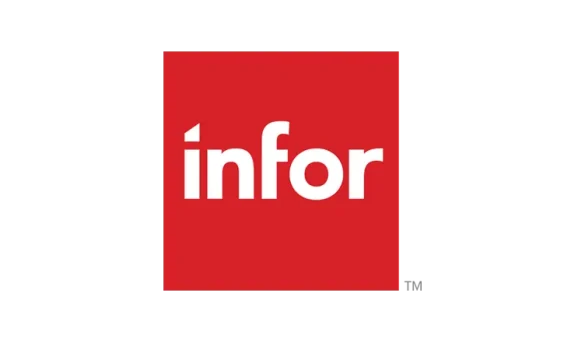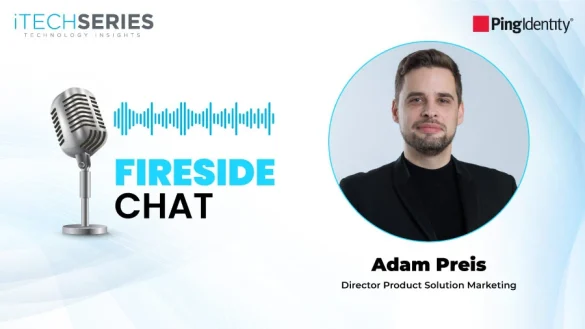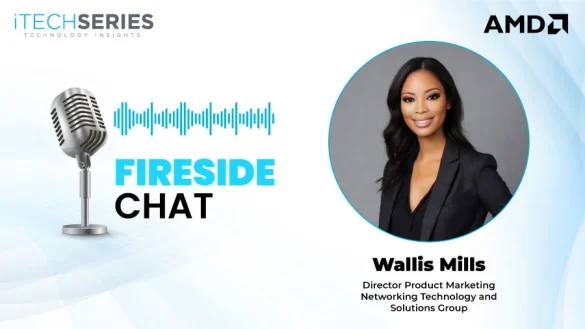Shvetha Raghunath, Director of Marketing at Infor India Pvt Ltd, reflects on her transition from technology pre-sales and business development to leading strategic marketing efforts. With over 20 years of experience, she explores B2B marketing evolution, data-driven strategies, persona-based campaigns, customer insights, AI-driven engagement, and balancing short- and long-term lead generation goals.
Welcome to the interview series, Shvetha. Could you tell us about yourself and your marketing journey?
With over 20 years of overall experience in technology pre-sales, business development; and marketing, my top area of interest has always been around some key strategies like personalized content, intent funnel creation, and a data-driven approach. Many years ago, I read a book called Purple Cow. It illustrates how brands stay in our memory and how they appeal to the audience. That thought and my experience in technology pre-sales shaped my decision to start my career in B2B marketing. Since then, marketing has evolved over time and new strategies have redefined the industry to find new ways to connect and engage with our audience. Today, in my capacity as Director of Marketing at Infor India, I can build a seamless journey for our audience, making use of all the learnings and it surely is an exciting, demanding and ever-evolving experience.
How have you seen the role of marketing evolve over the years, particularly with its closer alignment with sales, product, customer success, and RevOps?
For decades, B2B marketing techniques were still based on some basic principles of consumer marketing. However, over time, it has changed because of the change in value systems in society and is governed by how purchase decisions are made. From a stand-alone specialty to an integrated marketing approach, B2B marketing has come a long way. New forms of corporate communications and marketing channels emerged, and marketing automation played an important role in supporting a data-driven approach. Marketing automation now aims to break the silos among departments like sales, marketing, etc., and integrate customer data, CRM systems, etc. The single key objective across departments is sustainable growth, personalized and effective marketing campaigns, and measuring the impact of each touchpoint; clear and measurable KPIs. These integrated goals and seamless execution played a pivotal role in revenue growth. But the journey is ongoing and needs to be agile and scale according to the emergency of new technology and the ever-evolving buying behaviour of our audience.
My role as a marketing leader is to ensure we have consistent messaging and a brand experience to minimize any communication silos and enable an environment for an aligned reporting structure, common KPIs, goals, and objectives. The seamless journey of an EOI to MQL to SAO to SQL is the goal and measure for a good RevOps, which yields productivity and a positive impact on sales and marketing.
“Marketing has evolved over time and new strategies have redefined the industry to find new ways to connect and engage with our audience.”
How do you ensure that customer feedback is integrated into all aspects of your marketing strategy, from campaign planning to execution and analysis?
The biggest learning in my experience in marketing roles is not just about how we measure performance or collect customer feedback but about how to use that data to make informed decisions in the next stage of planning and execution. With increased data being collected from the digital landscapes and with intelligent automation systems in place, the role of the customer success team has evolved from a reactive support role to a proactive, strategic function that works with marketing to shape and adopt relevant strategies. More and more, the field marketing teams work with customer success; they can identify, channelize, plan action items, and tweak the execution plan based on customer feedback and customer behavioural patterns.
How can marketers maintain the right balance between short-term lead generation and long-term brand awareness goals?
When marketing budget ratios are based on the business type and market dynamics and not just about planning a funnel to get to marketing goals which is limited to brand building or performance marketing, we create a method for sustainable business growth. This growth includes short-term tactics to boost immediate sales and long-term brand building for ongoing growth. Budget allocations should reflect the strategic importance of each to the business. Short-term tactics should be flexible to adapt to market conditions, customer preferences, and industry trends while also pursuing a long-term vision for the brand.
How do you balance creativity with data-driven decision-making in your marketing strategies?
To begin with, the creative design and strategy choices are based on data and insights collected from ongoing or previous campaign activities. So creativity and data-driven approaches are not mutually exclusive. One supports the other and decides the next steps. Another operational way of balancing creativity with data-driven decision-making in marketing strategies is through running tests. Content, design, and sets that have worked well and those that haven’t are an indication of the next steps and approaches.
Could you tell us about your most challenging and successful go-to-market experience?
One of my biggest fortes has been crafting persona-based marketing campaigns. Over the years, I have made a conscious choice to improvise on this because even in B2B marketing strategies, we empower and work with the set of decision-makers and influencers who are people who come with their own set of experiences and envisage a technology roadmap for themselves. In my previous role as campaign manager at IBM or leading the marketing initiatives here at Infor India, I have worked on some very successful marketing campaigns for personas like CIO/CTO, CFO, etc.
It’s challenging because in today’s era, we, as successful marketers, want to be where the clients are, where they go to fetch content and make decisions based on that, but mastering this approach requires a very robust omnichannel approach. The right balance of choice of platforms so that we don’t spread ourselves very thin, and the right relevant content for clients to navigate through is the key. The success factor here is the element of brand recall that we create when we get repeat clients engaging with us through our landing pages, through the consumption of assets, or through our F2F activities.
In my current role at Infor, this approach is very beneficial because we have lots of ERP providers who claim to offer an industry cloud, but these solutions come up short. They are usually one-size-fits-all—not tailored to a specific industry, let alone a particular company. This kitchen-sink approach means that to make the software relevant to their operations, organizations need to pay for expensive extensions, workarounds, and customizations. The process is expensive, slow, and frustrating.
But at Infor, we don’t just want to meet your expectations when it comes to what the right technology can make possible. We want to exceed them. That’s why Infor is the Industry Cloud Complete Company.
What does it mean to be an Industry Cloud Complete Company? It means that Infor offers cloud solutions that are purpose-built for value realization specific to your industry, engineered into the product and platform from the bottom up. Our unique approach to the convergence of applications (Industry Cloud), data & technology platforms (Industry Cloud Platform), together with our Customer Success portfolio of offerings (including cloud readiness, deployment & adoption, and value realization through Care for customer support), makes Infor the Industry Complete Company. Because we are so entrenched in the industries we serve, we know what processes drive value—and we know what best practices for those processes look like. Hence, our marketing campaign caters to this niche audience with crisp but articulate information that helps today’s C-suites make the right choice.
What are some emerging marketing trends you’re most excited about, and how do you plan to incorporate them into your strategies?
It’s amazing to see how marketing trends have evolved and shaped the way we plan GTM strategies for our audience. While we were talking about new forms of content and their consumption patterns, we now have full-blown AI marketing strategies and media productions, which is a refreshed new reality for analyzing huge data and the way we leverage search engines.
The emerging trend I am very excited about and working towards incorporating into our strategies is SEO strategy is around AI overviews. While long-form content remains valuable, solely focusing on top-of-funnel content that search experience can easily answer might not be the most effective strategy. The shift comes in when you have product/solution-led content that brings in a unique perspective and in-depth analysis, which helps establish our expertise and keeps the audience engaged. It also goes back to my favorite marketing strategies, where marketers must create quality and leverage more of their first-party data. It is done through meaningful content creation, which provides in-depth information and promotes better lead conversion when it finally comes down to the bottom of the funnel.
Which key metrics do you analyze while evaluating the success of your marketing campaigns?
A successful B2B marketing campaign revolves around several crucial factors contributing to its effectiveness. These elements are pivotal in ensuring your campaign resonates with your target audience, drives engagement, and leads to conversions. In broad terms, the key metric we should be evaluating in our marketing campaigns that brushes across awareness, consideration, and decision stages is MQL to SAO conversion (marketing qualified lead to sales accepted opportunities). At every stage of the marketing touchpoint when we try to ace the game, we generate a quality MQL, which converts better and faster for the sales team to pursue. Let’s not confuse this metric to work for short-term lead conversion. The journey between an MQL and SAO can take days or months. The steps involved in between to nurture them enough with personalized content to convert them better would be the key metrics. This is done by keeping in mind the KPIs like search engine ranking, engaged visits, CTRs, and overall CAC.
How can marketers leverage AI to optimize campaigns and customer engagement?
AI is what data was in the 2000s. It’s no longer an innovative storyline but a necessity for growth in today’s extremely personalized marketing strategies. There are many new use cases for the adoption of AI in different marketing tools, but the natural enabler to make use of is around analyzing large volumes of historical data with contextual insights that help craft unique marketing approaches, adapting real-time messages that align with client needs, which also speeds marketing time to value efforts, and adding automation anatomy to go beyond predictive content sequences but more enriching touchpoints.

Infor is a global leader in business cloud software, specializing in industry-specific solutions. With a focus on sectors like industrial manufacturing, healthcare, automotive, and hospitality, Infor develops mission-critical enterprise applications that drive sustainable operational advantages. Founded in 2002, the company employs over 17,000 people globally. Infor serves over 60,000 customers across 40+ countries and boasts more than 15,000 cloud customers, with 100+ offices worldwide.
Shvetha is a seasoned marketing leader with over 20 years of experience in B2B marketing, technology pre-sales, and business development. She specializes in data-driven campaigns, digital strategy, and audience engagement, leveraging analytics to optimize the buyer’s journey. Passionate about personalized content and intent-driven marketing, she currently serves as Director of Marketing at Infor India, where she crafts seamless, impactful marketing experiences. Her expertise spans SEO, paid media, event management, and strategic campaign execution.










